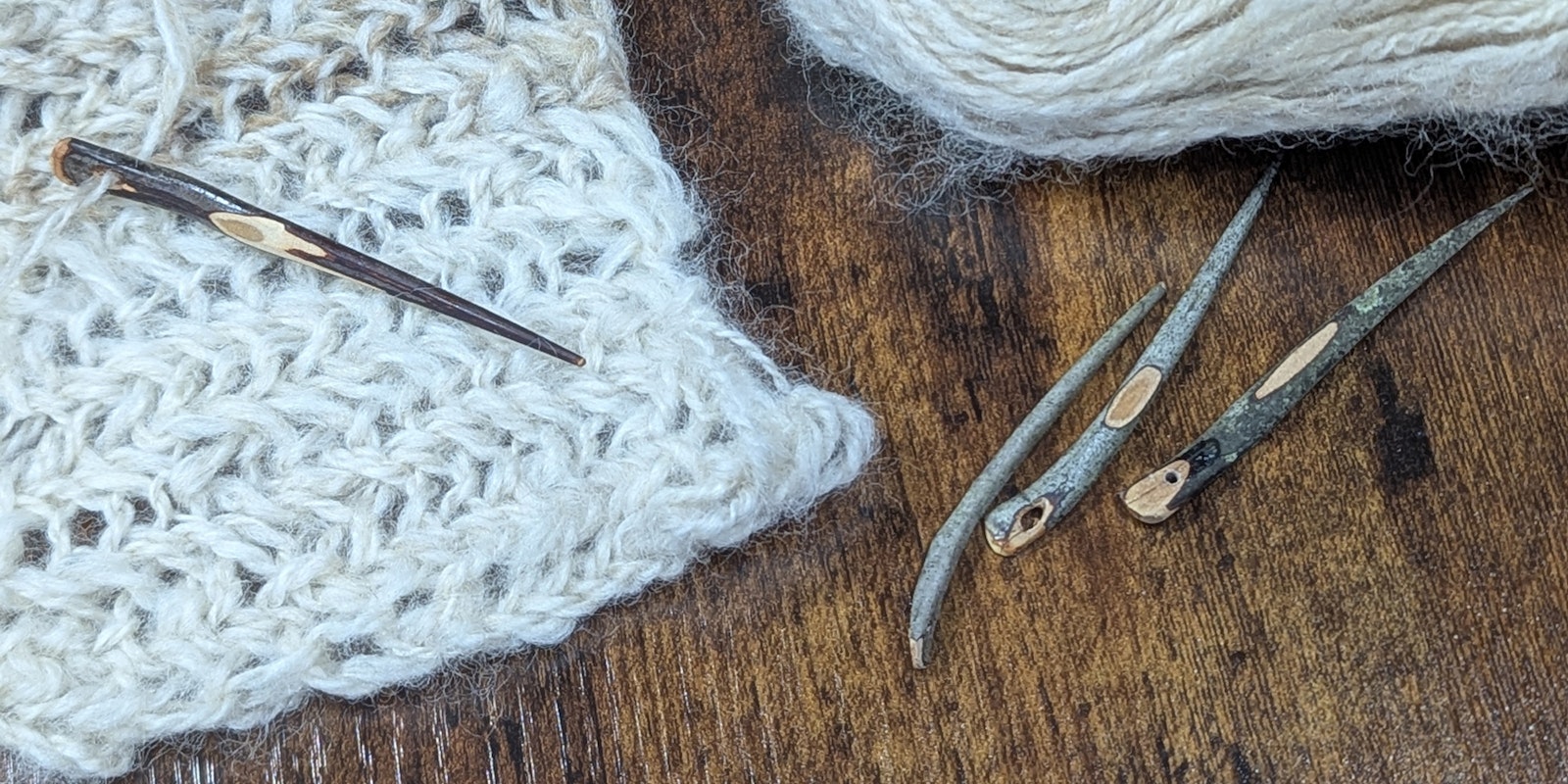All Access Exclusive
How to Craft a Natural Nålbinding Needle
With some basic shop tools, you can turn thorns from a menacing stand of trees—or other castoff wood—into an ancient fiber tool.
With some basic shop tools, you can turn thorns from a menacing stand of trees—or other castoff wood—into an ancient fiber tool. <a href="https://spinoffmagazine.com/to-craft-a-natural-nalbinding-needle/">Continue reading.</a>
https://spinoffmagazine.com/cdn-cgi/image/format=auto/https://www.datocms-assets.com/75073/1756430419-header.jpg?auto=format&w=900
Foraging in an overgrown field near her home, Meagan discovered an unlikely source for a fiber tool: the thorns of a honey locust tree, which she transformed into nålbinding needles. Photos by Meagan Condon
Contents
When we moved to 20 acres of farmland in Kansas two years ago, I didn't expect to find myself wandering through the woods foraging for fiber arts materials, but here we are. The previous owners of the property had let the pastures go wild for more than 30 years, resulting in a forested area full of honey locust and Osage orange trees that we now call the murder grove.
What Is a Honey Locust?
If “murder grove” sounds extreme, you aren't familiar with the honey locust. This is a cool and frankly terrifying tree that can reach 65–100 feet tall if left to grow. It has been around since at least the Pleistocene era, and possibly earlier. The first 20 feet of the trunk and branches are covered with hard thorns that can grow up to 8 inches long and are sharp enough to pierce leather. Above that 20-foot mark grow sweet fruit pods.
What could the honey locust possibly need dagger-like spikes to protect against? Mastodons. (You read that correctly.) In the Pleistocene, megafauna such as a full-grown mastodon on its hind legs could easily reach branches 10–20 feet high. The locust developed a way to protect its fruits from these massive herbivores.
While it is native where I live in the Midwest, the honey locust is still considered an unwelcome species, known to take over pastures and scrub woods. Typically, the locust is not permitted to get large enough to be a threat, unless someone lets them grow wild for 30 years in an untended pasture.
ALL ACCESS EXCLUSIVE
ALL ACCESS EXCLUSIVE
Unlock the Full Article with a Spin Off All Access Subscription
Get instant access to this article and the entire Spin Off library of projects, inspiration, and expert instruction. With your subscription, you’ll receive:
Unlimited access to the Spin Off Library, a digital miscellany of ebooks, patterns, and more exclusively for All Access subscribers.
Stream 50+ spinning videos and workshops
Master the art and science of spinning—from wheel mechanics to fiber prep
Learn from experienced spinners, dyers, and fiber artists in every issue
Explore in-depth tutorials, inspiring projects, and trusted techniques
Includes full access to print and digital issues of Spin Off Magazine
Spin Off explores the art and craft of making yarn. Each issue connects you to new and familiar voices in the handspinning community and is packed with information about fibers, tools, and traditions to inspire your creativity.
Plans start at just $11.99/month. Cancel anytime.
Meagan Condon is an internationally published writer and fiber artist with extensive experience teaching the gentle and not so gentle art of making yarn. Her areas of focus are microscopy of fiber, breed studies, plant fibers, natural dyes, digital community, and the science behind textiles. Since 2014, she has been teaching at fiber retreats and conferences across North America. You can follow her at luthvarian.com.



